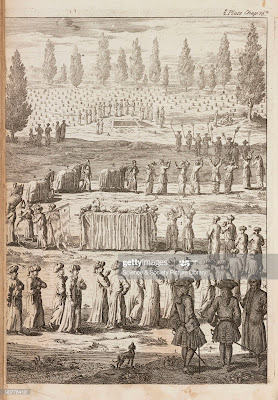The Kayı clan or tribe were an Oghuz Turkic individuals and a sub-part of the Bozok innate organization. In the eleventh century Mahmud al-Kashgari refered to Kayı. The word kayı signifies "the person who has may and power by relationship". In his history work Shajare-I Tarakime, the khan of the Khanate of Khiva and student of history Abu al-Ghazi Bahadur specifies Kayı among 24 Oghuz turkish clans, direct relatives of Oghuz-khan, who was the old ancestor of the Oghuz individuals, and the name of the clan interprets as "solid". In his broad history work "Jami' al-tawarikh" (Collection of Chronicles), the legislator and student of history of the Ilkhanate Rashid-al-Din Hamadani additionally says that the Kayı tribe originates from the most seasoned of Oghuz Khan's 24 grandkids who were the patriarchs of the antiquated Oghuz clans, and the name Kayı signifies "amazing".
Read more: 90 things to do in Quarantine
The well known Oghuz turkish society storyteller, diviner and poet Dede Korkut had a place with the Kayı clan. In the medieval times, some portion of the clan moved to the region of current Ukraine, they are referred to in the old Russian records as kovuy and kaepichi. As per the well known Soviet and Russian language specialist and turkologist A. V. Superanskaya, the starting point of the name of the city of Kiev is related with the Kayı clan: "As ethnographers affirm, ethnically "unadulterated" people groups don't and can't exist. Despite what might be expected, new people groups emerge from ethnic blends of at least two people groups, typically absorbing the best highlights of each. There are numerous people legends that the start of a country was laid by two (or a few) siblings ... Clearly, something comparative lies behind the legend of Kiy, Schek, Horev and Lybed. The ancestral name Kyy (Kiy) had a place with the antiquated Turkic people groups. It is as yet present in the names of ancestral structures of current Turkic people groups ".
Read more: Will world exist after 3000?
In Turkmenistan, the Kayı clan are a piece of the Geklen Turkmens living in the Balkan district of the nation.
They the kayi tribe established Beylik in Sogut and border area of Seljuk Empire.
In Anatolia, aggregate of twenty seven towns bear the name of Kayı.
Read more: 6 future technologies which will change shape of life
With the Russified name Kaitag (Mountain Kayı) the Kayı clan assumed a conspicuous job throughout the entire existence of the Caucasus, and now the Kaitag language is named one of five lingos of the Kumyk language, which for ten centuries (10–19 cc.) was a most widely used language in the North Caucasus. Kaitag realm was a main part of the Shamkhalate of Kazi-Kumukh state on the Caspian western seaboard that in various structures endured from the eighth to the nineteenth hundreds of years. Kaitag materials, got rid of under the Soviet guideline, stay unmistakable in their aestheticness and workmanship.
As indicated by Ottoman convention, Osman I, originator of Ottoman Empire, was slid from the Kayı tribe.This case has, be that as it may, been called into genuine inquiry by numerous cutting edge history specialists. The main proof for the Ottomans' Kayı drop originated from lineages composed during the fifteenth century, in excess of a hundred years after the life of Osman. All the more fundamentally, the soonest lineages composed by the Ottomans did exclude any reference to Kayı drop whatsoever, demonstrating that it might have been created at a later date.
Read: Who was Sulyeman Shah





No comments